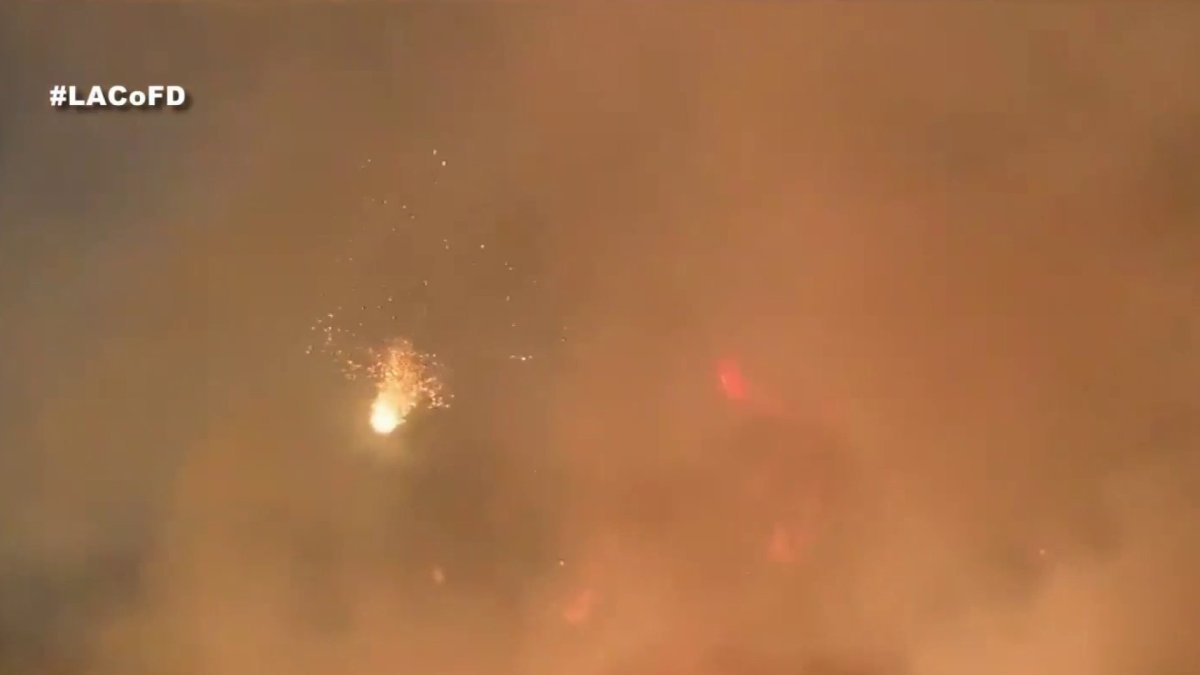
Federal investigators are looking into whether a huge wildfire near Los Angeles was sparked by Southern California Edison utility equipment, according to the company.
Edison has turned over a section of an overhead conductor from its transmission facility in the area where the Bobcat Fire started more than two weeks ago, company spokesman David Song said Wednesday.
The initial report of fire was near Cogswell Dam in the San Gabriel Mountains at 12:21 p.m. on Sept. 6.
In an incident report filed with the state Public Utilities Commission last week, Edison said its nearby equipment experienced an issue five minutes earlier, 12:16 p.m.
A circuit at a nearby substation experienced a "relay operation,” indicating its equipment detected some kind of disturbance or event, Song said.
Cameras captured smoke developing in the area around 12:10 p.m., prior to the activity on Edison's circuit, he said.
Evacuation orders remained in place for residents: Evacuation List
Edison will assist the U.S. Forest Service in its investigation of the fire that has burned more than two dozen homes and other buildings on its way to becoming one of the largest blazes in Los Angeles County history.
“Southern California Edison understands this is a difficult time for the many people who are being impacted by the Bobcat fire,” Song said. “Our thoughts are also with those affected by the wildfires currently burning across the western United States.”
The Forest Service and the Public Utilities Commission didn't immediately respond to emails seeking more information.
In recent years California utilities have strategically shut off power to some areas in order to prevent its equipment from sparking wildfires. Edison did not have any planned shutoffs in the days before the Bobcat fire erupted.
Firefighters are finally starting to tame the blaze, with containment on Wednesday hitting 38% — a jump from just 17% a day earlier.
Crews took advantage of two days of calmer weather after erratic winds last weekend pushed flames out of the Angeles National Forest and into communities in the desert foothills, fire spokesman Larry Smith said Wednesday.
“Because the fire transferred out of the timber and into the light fuels near the desert, we were able to make some real progress,” Smith said. Crews will shore up containment lines ahead of hotter, gusty weather predicted for the weekend, he said.
California Wildfires
Thousands of residents remain under evacuation orders and warnings. It’s one of dozens of other major wildfires across the West, including five in California that are among the largest in state history.
A major fire in the northern part of the state, the CZU Lightning Complex in San Mateo and Santa Cruz counties, was 100% contained, the California Department of Forestry and Fire Protection, or Cal Fire, said Tuesday evening. The fire was ignited during a barrage of lightning on Aug. 16 and the cluster of blazes went on to destroy 925 homes and kill one person.
Firefighters have also controlled several other lightning-sparked wildfires burning for more than a month in Northern California.
Numerous studies in recent years have linked bigger U.S. wildfires to global warming from the burning of coal, oil and gas, especially because climate change has made California much drier. A drier California means plants are more flammable.